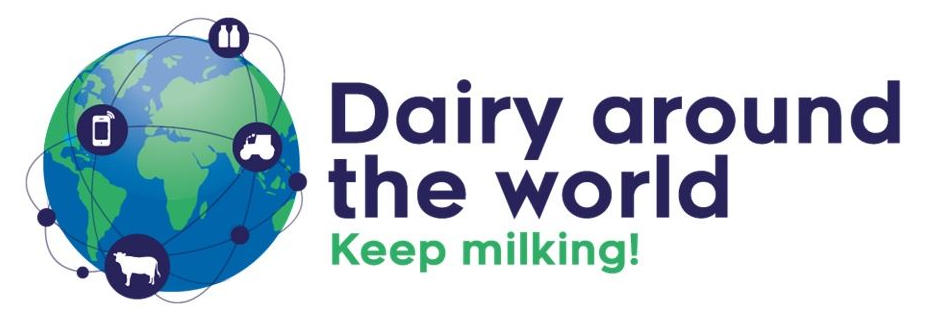Dutch Dairy Farming
Is your bucket half full or half empty?
The small, giant Netherlands as a reference to Brazilian Farmers
The Netherlands, along with many other European countries passed through important phases related to the progression of dairy farming. Though it has faced huge challenges, such as milk quotas, the Netherlands is a reference in that sector. To better understand their process of milk production, let us go back a few years in history.
In the mid-1950s, Europe faced underproduction in agriculture, as a result, they created CAP in 1962 (Common Agricultural Policy). For many years, CAP subsidized a guaranteed minimum price for dairy products. Milk production increased in response until the end of 1970, when the supply was much higher than the demand and continued to exceed demand in the coming years. This resulted in the European Union buying tons of surplus milk and the government introducing the milk quota system as a consequence. In 1984, each member of the European Community was authorized to produce milk products up to a limit based on 1981 production, plus 1%. Anyone exceeding that limit, had to pay a fine.
Quotas could be traded among producers, so those wishing to leave the business, could sell their production quota to other producers wanting to increase their scale of production. The quota system lasted for just over 30 years. Through those years, many things changed, such as reducing warranty and price intervention. The quota system was then viewed as an obstacle in responding to the growing worldwide demand for dairy products and was abolished on March 31, 2015.
There were many optimists about the end of quotas, considering new job opportunities that would arise with increased production and the autonomy that producers would have for making business decisions. However, in reality, the end of milk quotas and freedom of production only lasted a short time. Before the quota system ended, there were measures taken by the government to protect the environment. Everyone knew with the end of quotas, the volume of milk would increase considerably and lead to more waste, increasing the risk of eutrophication of groundwater and surface water. Thus, the government implemented limits on the nitrogen and phosphorus distribution of chemical waste and fertilizers.
Immediately following quotas, the government imposed a rule that any phosphate surplus from manure, should be properly processed, resulting in extra costs for the producer. Not being enough, there were new restrictions also limiting farm growth. One measure, for example, established that Dutch farms would have until January 1, 2017 to adjust their herds by the number of animals they had on July 2, 2015, less 4%. Many producers who have invested in livestock and plant activity, confident of the opportunity to grow due to the end of production quotas, became frustrated with the new system and felt limited again. If producers did not adjust their herd by the deadline given, they would not receive money for the milk produced. On the other hand, those who adjusted before the set limit were awarded a cash bonus.
The dream of raising the herd remained distant for many producers. Nowadays, for a producer already operating at their phosphate production limit, to add one cow to the herd, they must acquire the necessary phosphate quota of that animal. The bill is simple: each cow produces around 45 kg of phosphate per year. The value of a Kg of phosphate averages €160.0 / kg. This means it costs the producer €7200.0 just for the right to add one dairy cow to the farm.
It is amazing that such a small country, having faced all these difficulties limiting the growth of dairy farming, is still able to stand as a major dairy reference. The Netherlands has an approximate area of 42,500 square kilometers, which is smaller than the state of Rio de Janeiro from Brazil, but that justifies the difficulty on finding land for production and the highest prices of it. One hectare of land in the Netherlands costs about €60,000, so they have learned how to do more with less. In recent years, they have improved in technology, genetic enhancement and roughage production. All being key factors to boost efficiency of dairy farms. Since they could not scale production, the Dutch focused on being more efficient with what they had. They did it very successfully, achieving results such as annual milk output of 15.52mi ton/year and average yield of 8900 Kg milk/cow/year (IFCN 2018).
Brazil has 8,516,000 square kilometers (equivalent to 200 x the area of the Netherlands) with annual production of 34.23 mi ton/year and average productivity of 1600 Kg milk/cow/year (IFCN 2018). There are multiple sources of affordable, arable land in Brazil, a favorable climate for two harvests per year and abundant water. What justifies the inefficiency of this sector in Brazil, if there are so many variables that favor the production?
Brazil has great potential, but it is necessary for Brazilian producers to take the opportunity to produce milk in this country, and to see the bucket always half full and never half empty. The optimistic perspective of vision completely changes the business itself. Moreover, Brazilian dairy farming needs greater acceptance of innovation and technology by producers and even consultants. To achieve efficiency and maximum production we must always be up to date, tuned to new technologies. Challenges in the sector will always exist, but this does not prevent the success of the milk activity.
Nayara Magalhães Gonçalves
Veterinary Graduated at Federal University of Vicosa – MG
Market Support and Development Manager at UNIFORM-Agri


